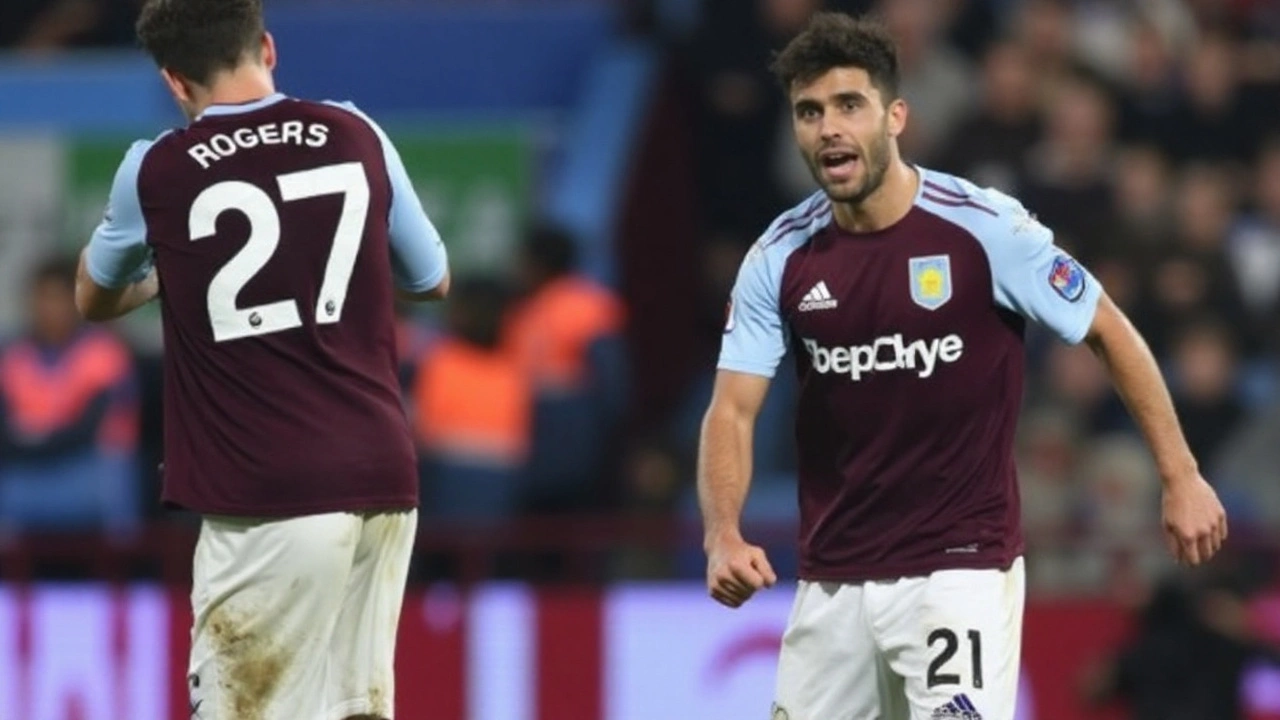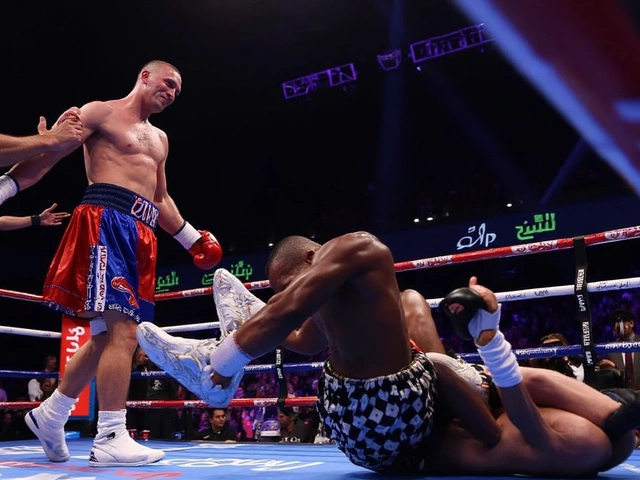The aura around Villa Park vanished in 90 minutes. Crystal Palace walked into a ground that hadn’t seen a league defeat in over a year and left with a 3-0 win that felt clinical, calm, and deserved. Jean-Philippe Mateta’s first-half penalty set the tone, Marc Guehi added a thumping second with transfer chatter swirling around him, and Ismaila Sarr’s late header sealed a result that will sting for Aston Villa.
The scoreline echoed a trend that has crept into this fixture: Palace have now won four of the last five meetings with Villa and scored 16 across that run. This one arrived in front of 41,036 fans on a Sunday afternoon kickoff (2 PM ET) and it ended a proud home streak for Unai Emery’s side. Villa are three league games into the new season without a goal and with only a point to show for it. The noise around the club—absent stars, transfer rumours, a deadline day looming—only got louder.
Match at a glance
Palace didn’t need chaos to take control. They were tidy, compact, and patient, and when the big chance came, they took it. On 21 minutes, Mateta stepped up from the spot and buried the penalty. From there, Oliver Glasner’s team slowed the pace, squeezed space, and forced Villa to play in front of them. The home side struggled to find speed or depth in their attacks.
Villa did flicker after the restart. They pushed the full-backs higher and tried to get runners closer to their striker, but Palace never lost their grip. Glasner made an important in-game call, introducing new signing Yeremy Pino for Will Hughes, who had been on a yellow card as Villa began to build a bit of pressure. The adjustment helped Palace regain a foothold in midfield and threaten again in transition.
The second goal changed the mood inside the stadium. At 68 minutes, Guehi, in the spotlight with the transfer deadline hours away, stepped forward and hammered in a superb strike. It carried the feel of a parting shot—if it proves to be one—or simply the moment a maturing centre-back stamped his authority on a big occasion. Villa’s response was flat. The belief drained out of them as Palace upped the management of the game, slowed restarts, and kept their distances tight.
Ten minutes later, Palace exposed Villa’s set-piece concerns. Maxence Lacroix hurled a long throw into the area and Sarr rose to guide a header inside the far post at 78 minutes. It was a simple routine, well executed, and it underlined Palace’s variety: they can pass through you, break quickly, and still hurt you off restarts. The only dampener for the visitors came late as Sarr appeared to suffer an upper leg problem and had to come off around the 90-minute mark.
- 21’ — Jean-Philippe Mateta converts from the spot (0-1)
- 68’ — Marc Guehi lashes in a superb second (0-2)
- 78’ — Ismaila Sarr heads home from Maxence Lacroix’s long throw (0-3)
- 90’ — Sarr leaves the field with an apparent upper leg issue
Beyond the goals, Palace were composed. The centre-backs attacked crosses early, the midfield screened smartly, and the front line worked as a unit to steer Villa’s build-up into predictable areas. When Palace did break, they broke with intent—three or four passes, forward runners, and pressure on the final line. It wasn’t flashy football; it was efficient, the kind of away performance managers replay on Monday morning as a template.
For Villa, the afternoon felt like a step back. Their phases were too slow, the central combinations never quite clicked, and they didn’t get enough clean looks in the box. The absence of key figures didn’t help. Emiliano Martinez was missing entirely as talk swirled about interest from Manchester United, and that uncertainty spilled into the wider picture—who’s staying, who’s arriving, and who’s available for next weekend.
Tactics, selection and the transfer subtext
Glasner’s Palace continue to look well-drilled without the ball. The shape stayed narrow enough to close passing lanes into Villa’s attacking midfielders, while the wing-backs and wide forwards jumped out on cues to block switches. The visitors rarely overcommitted numbers forward until they sensed Villa stretching, and their pressing was selective rather than constant—more about triggers than a full-pitch chase. It made Villa earn every yard.
The long throw that led to Sarr’s goal was a neat wrinkle. It forced Villa to defend a different type of delivery, one that drags centre-backs into traffic and tests timing rather than just aerial power. Lacroix’s flat trajectory made it hard to clear, and Palace loaded the six-yard box. On a day where margins decided momentum, that set-piece was a dagger.
Guehi’s performance will get the headlines. With speculation about a move before the deadline, he played like a senior pro in complete control—clean in duels, calm under pressure, and decisive in his forward steps. The goal was a highlight, but his defending mattered more. If this proves to be his last appearance for Palace, it’s a leave-behind that fits the moment. If he stays, it’s a reminder of why the club built around him.
Pino’s introduction was about risk management and rhythm. Hughes on a yellow left Palace vulnerable to the type of tackle that can flip a game, and Villa were finally working the ball into the half-spaces. Pino’s energy and ball-carrying gave Palace an outlet, and it reset the tempo. Small choices like that, made at 1-0 away from home, often decide whether you ride out a storm or get pulled into it.
Emery’s challenge is a sharper one now. With three league matches gone, Villa’s attacking patterns haven’t produced enough. The connections between midfield and front line feel forced, and the wide play hasn’t opened up the middle. There was endeavour, but little incision. You could see Emery searching for the right combination as he adjusted roles and asked more from his full-backs, yet Palace’s block didn’t break.
Selection issues aside, the timing is awkward. Deadline day arrives Monday, and Villa need clarity as much as they need signings. A proven finisher would help, but so would a reliable bridge from midfield to attack—someone who sees the pass early and plays it quickly. Palace, meanwhile, face their own decisions. If offers land for senior players, they must weigh short-term momentum against long-term planning. Performances like this buy a manager trust, but the market rarely cares about a good away day.
The bigger picture is simple. Palace leave the Midlands with a statement win and a clean sheet, pushing themselves up the early table with the kind of balance managers crave. Villa are still searching for a first league goal and a first win of the campaign, and the end of that home unbeaten run will sting. These aren’t season-defining results in August, but they set narratives that can stick around longer than you expect.
What it means now? For Palace, belief. They backed up their recent record against Villa with something emphatic and modern—control without the ball, clinical in both boxes, and flexible on set pieces. For Villa, pressure. The crowd stayed with them even at 0-3, but patience always has a limit. Fixing the attack is priority one. Shutting out the transfer noise is a close second.
Next up, Aston Villa head to Everton on Saturday, September 13 (10 AM ET), a fixture that looks less like a routine away day and more like a test of nerve. Crystal Palace return home to host Sunderland, carrying momentum and a few questions for the medical staff after Sarr’s late issue. One side needs a reset. The other just found a gear that travels.





